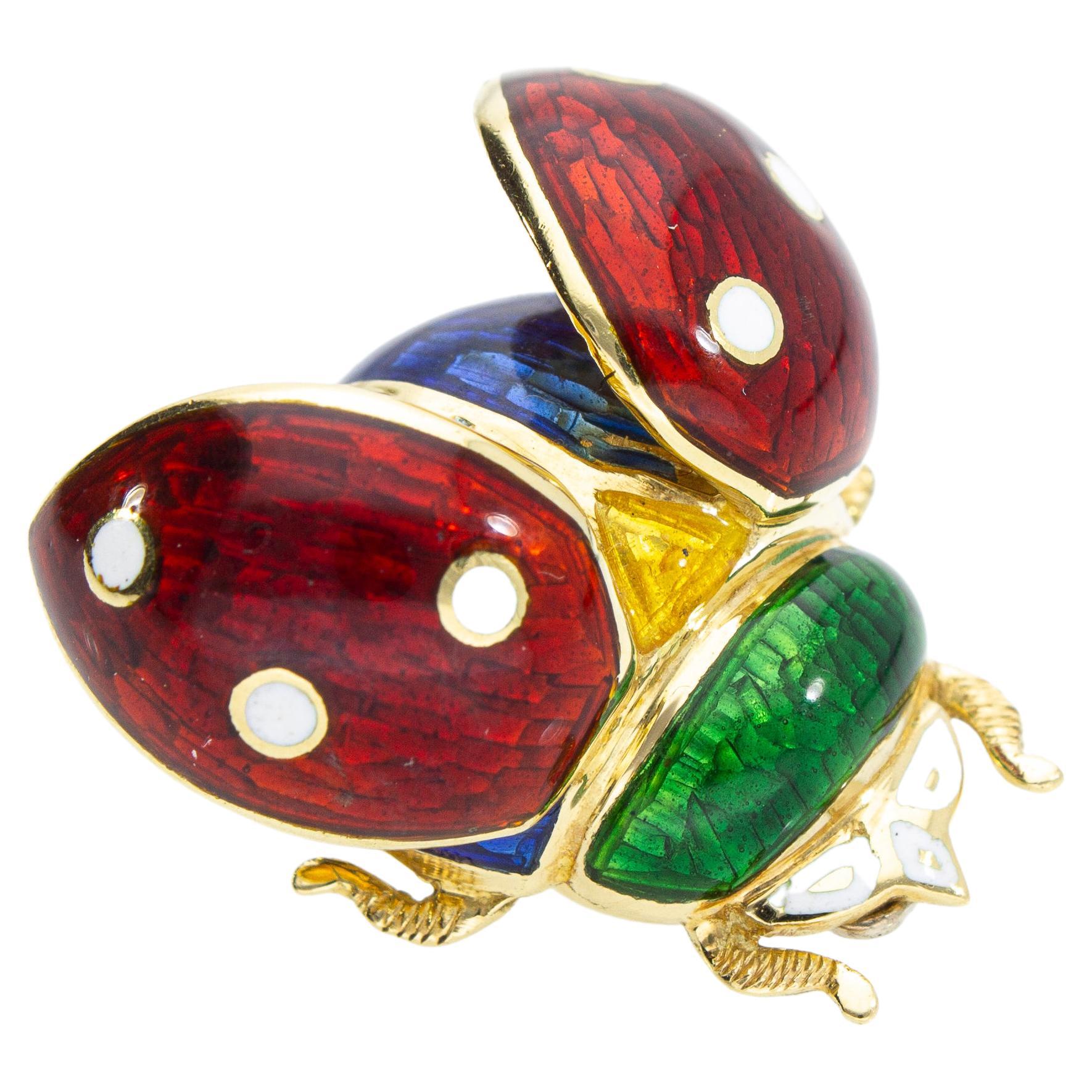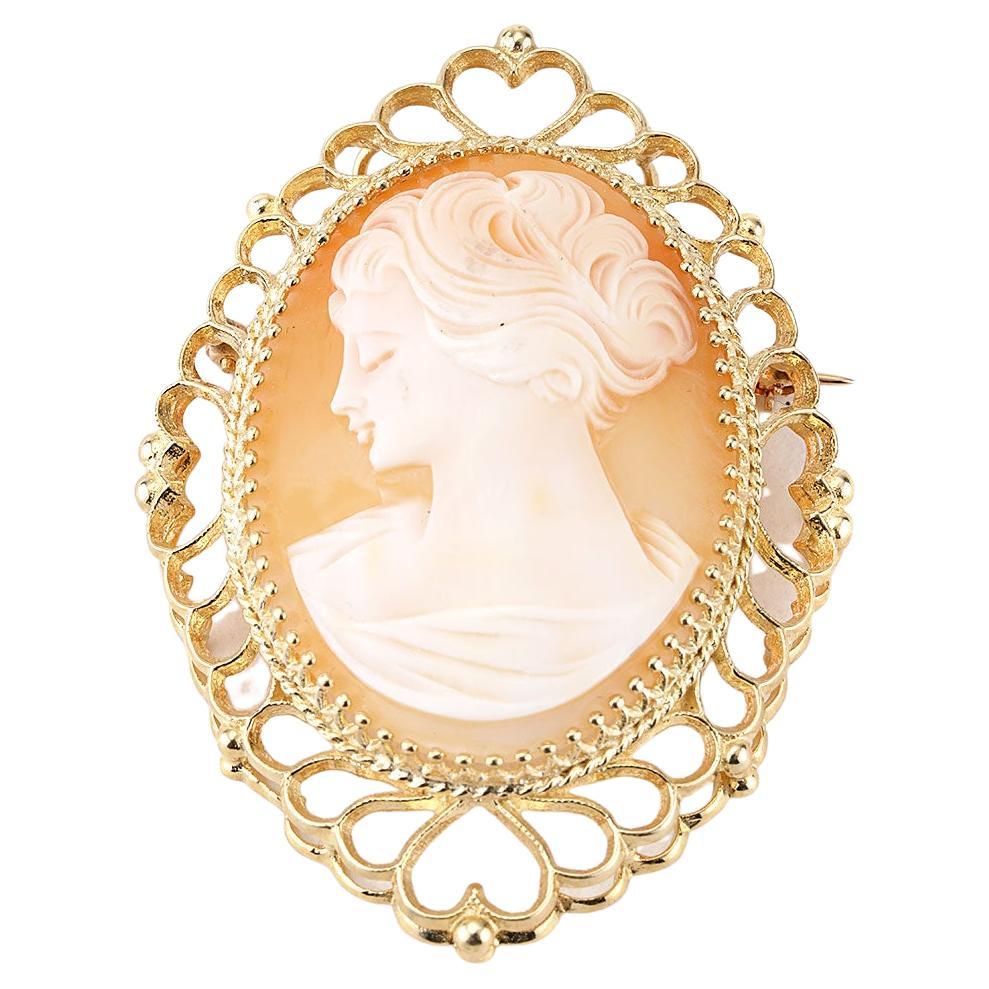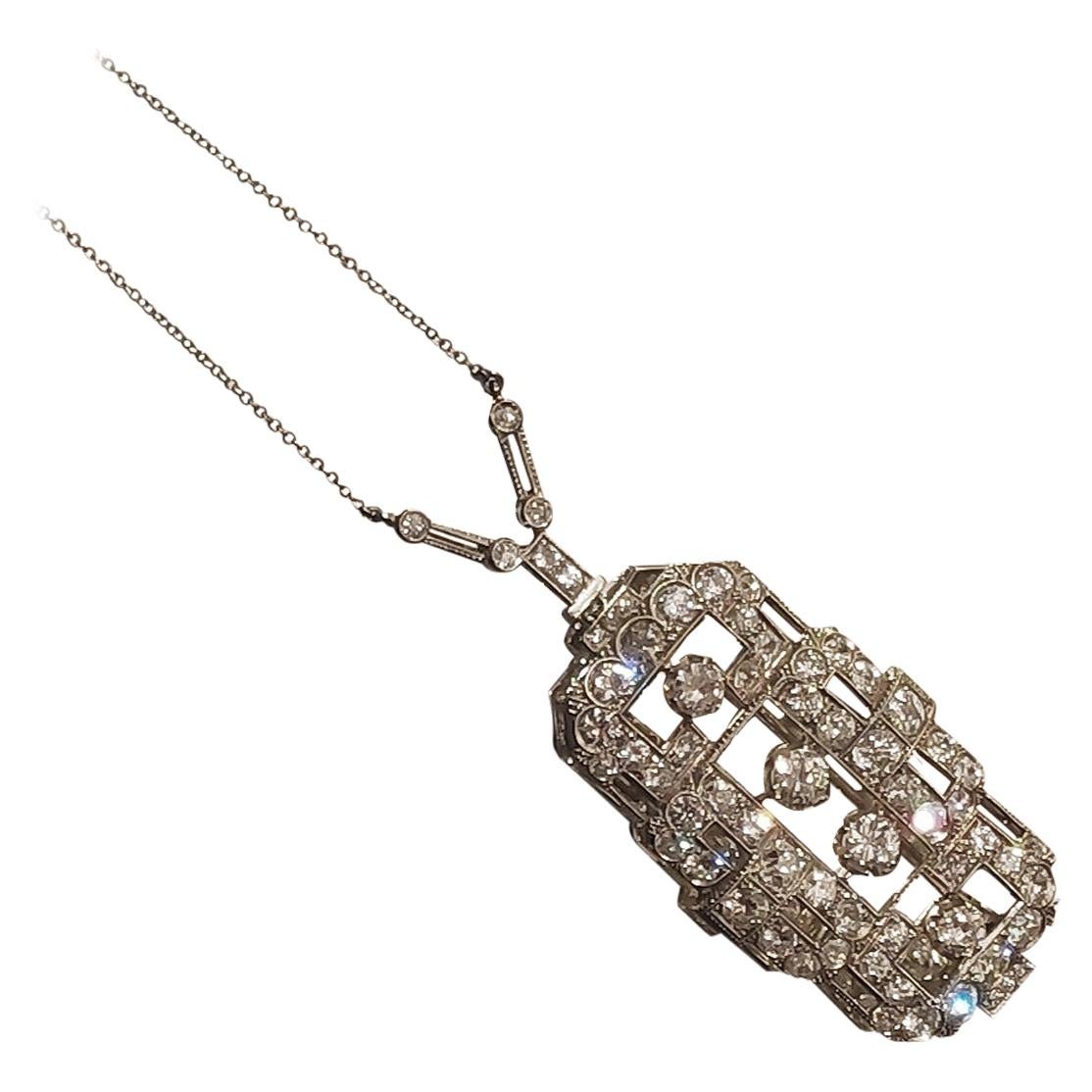Items Similar to Antique Amuletic DozenRockCrystals Caged MedievalStyle FourRing Bronze Pendant
Want more images or videos?
Request additional images or videos from the seller
1 of 12
Antique Amuletic DozenRockCrystals Caged MedievalStyle FourRing Bronze Pendant
About the Item
This antique amuletic bronze framed pendant cages a dozen single-cut rock crystals that each feature a table-cut decagon crown, deep pavilion, 21 facets, uncut girdle, and 7mm diameter. They are tightly set within four linked rings to overlap at the same angle in a sparkling single row. Seeming to retain a little of its original gold gilding on just the interior, the frame that surrounds each of the four sections of three crystals enables them to reflect surprising pale-yellow-and-lime light when the pendant is viewed from certain angles.
Suggesting French heritage, the Medieval Frankish culture in northern France made jewelry in similar segmented or openwork shapes of wheels or whorls, which were worn as gem-decorated disk-shaped brooches or gold-caged rock-crystal sphere pendants. But gem faceting as we know it was not widely practiced until the 16th Century with advanced European lapidary tools, mostly in France and the Netherlands.
As the single cuts on these crystals predate Baroque and brilliant rose-cuts, it could date to the 16th Century while rock crystal remained more popular in European pendants than diamonds. Among its collected decorative objects dating to the 1500s, TheMet museum notes in its online descriptions that during this century "rock crystal was priced at its weight in gold".
The pendant bail with jump-ring enables turning movement while dangling for maximum shimmer. Originally, it may have been worn as a single earring via a ribbon tied around the ear or hair, or sewn onto stiff fabric such as a hat.
While it is unclear if there are specs on or in the crystals, as they can be individually rotated, they may be enhanced by a professional cleaning. Their culets range from pointed to off-center to blunted, while a loupe will show that some edges of the crystals extend beyond the frame in order to cage them in place.
An antiquity like this pendant may have motivated haute-couture fashion-designer Gabriel "Coco" Chanel's favorite fine-jewelry artist Fulco di Verdura to create his iconic mid-century gold-cage ring filled with smaller loose cut-gems. Earlier, the duo had traveled together exploring museum-collected European cultural artifacts, whose designs and materials inspired some of their best known works. The 21st Century "Caged Collection" of loose cut-gems--developed by the ongoing business of Verdura in homage to its founder--is the only jewelry that we could find that approximates the curvilinear-cage design of this antique crystal-filled pendant, while it has not reproduced one like ours.
- Metal:
- Stone:
- Stone Cut:
- Weight:5 g
- Dimensions:Width: 1.25 in (31.75 mm)Depth: 0.25 in (6.35 mm)Diameter: 1.25 in (31.75 mm)Length: 1.5 in (38.1 mm)
- Style:
- Place of Origin:France
- Period:
- Date of Manufacture:1520-1599
- Condition:Wear consistent with age and use.
- Seller Location:Chicago, IL
- Reference Number:1stDibs: LU3244219156422
About the Seller
5.0
Vetted Seller
These experienced sellers undergo a comprehensive evaluation by our team of in-house experts.
Established in 2012
1stDibs seller since 2022
9 sales on 1stDibs
Typical response time: 1 hour
- ShippingRetrieving quote...Ships From: North Adams, MA
- Return PolicyA return for this item may be initiated within 1 day of delivery.
More From This SellerView All
- Trifari 1940s Philippe 4PieceParure CrystalFloraMotif GoldNecklaceEarringsBroochBy Alfred Philippe for TrifariLocated in Chicago, ILIn the late 1940s, Trifari's French-born artistic director Alfred Philippe, who had earlier created fine jewelry for Cartier and Van Cleef & Arpels, designed this flora-motif crystal...Category
Mid-20th Century American Art Deco Pendant Necklaces
MaterialsCrystal, Diamond, Gold, Gold Plate, Yellow Gold
- 16thCentury Renaissance SilverRepousse Romantic Engagement Pendant Or HatBadgeLocated in Chicago, ILThis early-16th-Century Renaissance period silver-repousse round medallion pendant features a romantic encounter in a rural landscape between a man and smiling woman wearing European-nobility fashion, including a men's feathered hat, tights and sword. A silversmith was commissioned by this unknown man to make the pendant as a hat badge to promote his affectionate nature, which is conveyed by the welcomed gestures between the adult couple, who stand cheek-to-cheek and hand-in-hand. As there is a church in the distant landscape, this may have been his wedding-engagement announcement. It is worth noting that romantic love via marriage was a rarity before the 18th Century. The tragic romantic Italian legend of Romeo and Juliet was first translated into English for publication in 1562--several decades before Shakespeare turned it into a famous play about a deadly consequence of separating lovers. The pendant medallion is framed with a filigree-like inward-curving bezel and a flat metal backplate, while its bail enables it to be pinned as a brooch or strung on a necklace. A perfect engagement or wedding gift for a man or woman who loves antique...Category
Antique 16th Century French Renaissance Pendant Necklaces
MaterialsSilver, Gilt Metal
- Cruciform NielloInlay FleurDeLys GiltEngravedCopperAlloy Heraldry Brooch PendantLocated in Chicago, ILThis 15th-Century period or older gilt copper and silver alloy amulet with niello inlay is an elaborately engraved three-dimensional brooch and pendant, which demonstrates the epitome of miniature decorative nielli in the early Renaissance by European goldsmiths of small cruciform or quatrefoil objects with heraldry symbols. Beyond a dense array of engraved radiant-light, cloud and star motifs with punchwork, it features a 10mm fine black crested staff that is the Christian symbol for the Holy Trinity. This intricate engraving with niello has fleur-de-lys elements, like a French or Florentine coat-of-arms or monogram used to identify noble families or a significant person like a king. It tops a 5mm bar, which is bracketed by 10mm peaked bars that form a cross. When worn, it is positioned horizontally like an elongated barbed quatrefoil. The bars may be concealing a relic such as wood, while it is not clear how these pieces are attached to the front. As a symbol of French conversion to Christianity, the French King Louis in the 12th Century made a fleur-de-lys element of the Holy Trinity vector the official emblem of his royal authority on shields. Later, English kings adopted it when claiming the French throne. By the 14th Century, the fleur-de-lys was used in family insignia that was sewn onto a knight's coat-of-mail surcoat. This coat-of-arms insignia could identify them if found on a battlefield. The Met Cloisters museum collection includes a similarly sized mid-15th Century French gold brooch...Category
Antique 15th Century and Earlier European Renaissance Brooches
MaterialsGilt Metal, Mixed Metal, Niello, Silver, Copper
- Artist BertoiaStyle Hammered SterlingSilver SquiggleSpiral UndulatingWire BroochLocated in Chicago, ILThis modern mid-century abstract three-dimensional unsigned brooch is a single hand-hammered sterling-silver wire that was shaped by an artist into an undulating squiggle that ends i...Category
Early 20th Century American Modern Brooches
MaterialsSterling Silver
- Couture 1936-49 Schiaparelli-Dali-Style Set FauxSapphire&Pearl Earrings & BroochLocated in Chicago, ILThis surrealistic handcrafted faux-sapphire-topped-pearl cluster brooch and clip-earrings set dates to around WWII, when fashion designer Elsa Sch...Category
Vintage 1940s American Modern Brooches
MaterialsCrystal, Pearl, Sapphire, Mixed Metal
- ArtNouveau Antique ArtistSigned Peacocks Set HandWroughtMetals Earrings & BroochBy Louis Comfort TiffanyLocated in Chicago, ILThis antique Art-Nouveau period American-signed metalsmithed set features intricately etched, chased, chiseled and pierced curvaceous peacocks in unusual copper-gilt silver. "Sterlin...Category
Early 20th Century American Art Nouveau Brooches
MaterialsSterling Silver, Copper
You May Also Like
- Ladybug-Shaped Pendant and Brooch with Enamel of Various ColorsLocated in Rome, ITThe pendant in the shape of a ladybug with open wings, can be worn both as a pendant and as a brooch. The ladybug is decorated with transparent enamels of various colors. Its manufa...Category
Antique 19th Century Retro Pendant Necklaces
MaterialsEnamel
- Antique Cameo Heart Pin with Diamond in 14K Yellow GoldLocated in Chicago, ILThis antique cameo heart with diamond pin is made of 14K yellow gold. It contains a round diamond weighing 0.01 CTTW.Category
Late 20th Century Art Nouveau Brooches
MaterialsDiamond, 14k Gold, Yellow Gold
- Antique Cameo Pin and Pendant with Heart Bezel in 14k Yellow GoldLocated in Chicago, ILThis antique cameo pin and pendant with heart bezel is made of 14K yellow gold. Measurements are 2" H x 3/4" W.Category
Late 20th Century Art Nouveau Brooches
Materials14k Gold, Yellow Gold
- Art Deco Diamonds Brooch and PendantLocated in Palermo, ITArt Deco' Diamonds 14 ct Platinum Brooch with chain for pendant. long 90cm. central diamonds 0,80 eachCategory
Vintage 1920s Italian Art Deco Brooches
MaterialsDiamond
- Diamonds and Precious Stones Peacock Brooch 18 Karat GoldLocated in Palermo, ITDiamonds and Precious Stones Peacock Brooch in yellow and withe gold 18kt diamonds ct 2,20,Italian handcrafted.1990 misurement:2cm x 8 cm Australian pea...Category
1990s Italian Modern Brooches
MaterialsEmerald, Ruby, Blue Sapphire, Diamond, Gold, 18k Gold
- Art Nouveau Diamond Opal Pendant/Brooch, circa 1900Located in London, GB18ct gold & silver set Art Nouveau Diamond Opal Pendant/Brooch dated circa 1900 Five round opals with an articulated pear shaped opal drop, very well matched with lively play of colours and iridescence in reds, greens, blues and gold. Set in 18 carat yellow gold claw collets Two main transitional cut (old mine) diamonds 0.70ct. Mix of old mine and rose cut diamonds in an 18 carat yellow gold with “silver Set” channel setting , approx 1 ct total. G/H/I, VS2-SI2. Total diamond weight: approx 1.7carats Setting diamonds in gold with a thin layer of silver, “silver set”, was a technique used in the Georgian/Victorian/Art Nouveau period as white coloured gold and platinum were not yet available. A very thin layer of silver was applied to the gold, on which the diamonds were set, to show them off to their best advantage (as the yellow would reflect and distort the white colour of the diamonds). The Art Nouveau period was a short lived but worldwide movement which reached its peak at the end of the 19th Century and the first decade of the 20th Century. It had its roots in the Pre Raphaelite and Arts and Crafts movements in Britain in the 1860’s. Artists, such as William Morris, took their inspiration from the flora and fauna of nature and rejected the mass industrialisation and mechanisation of the Victorian age. Art Nouveau continued with this theme and has a distinctive appearance with soft, curved shapes and lines and often depicted natural designs such as flowers, birds and the female form. Before the Art Nouveau period, the emphasis had been to design pieces with an emphasis on gem stones, diamonds, rubies emeralds etc. However, during the Art Nouveau period, jewellers adopted the idea of using other semi–precious stones “from nature” such as agate, garnet opal, moonstone, aquamarine and experimented with a wide variety of new techniques e.g. enamelling. The “New Art” style became a worldwide movement encompassing all disciplines of the arts, and world class artists as far afield as Gaudi with his “modernisme” architecture in Spain, Louis Comfort Tiffany in New York with objects, Galle Glass in France and the Liberty & Co Archibald Knox designs in Britain, Jugendstil in Northern Europe and Faberge in Russia. The movement flared brightly but briefly and by 1910 it was already going out of style to be replaced by Art Deco. In fitted period box. Detachable 18ct brooch...Category
Antique Early 1900s British Art Nouveau Pendant Necklaces
MaterialsWhite Diamond, Opal, Diamond, 18k Gold, Yellow Gold, Silver
Recently Viewed
View AllMore Ways To Browse
Chanel Coco Small
Sparkle Chanel
Coco Chanel Fabrics Used
Antique Designer Jewelry
Antique Jewellery Designers
Antique Jewelry Designer
Antique Jewelry Designers
Designer Antique Jewelry
Antique Chanel
Chanel Antique
Mid Century Pendant Light Fabric
Chanel Inspired Jewelry
Antique Disk
16th France Renaissance
Rocking Hair
Metal Cage Light
16th Century French Renaissance
Caged Gold Pendant





